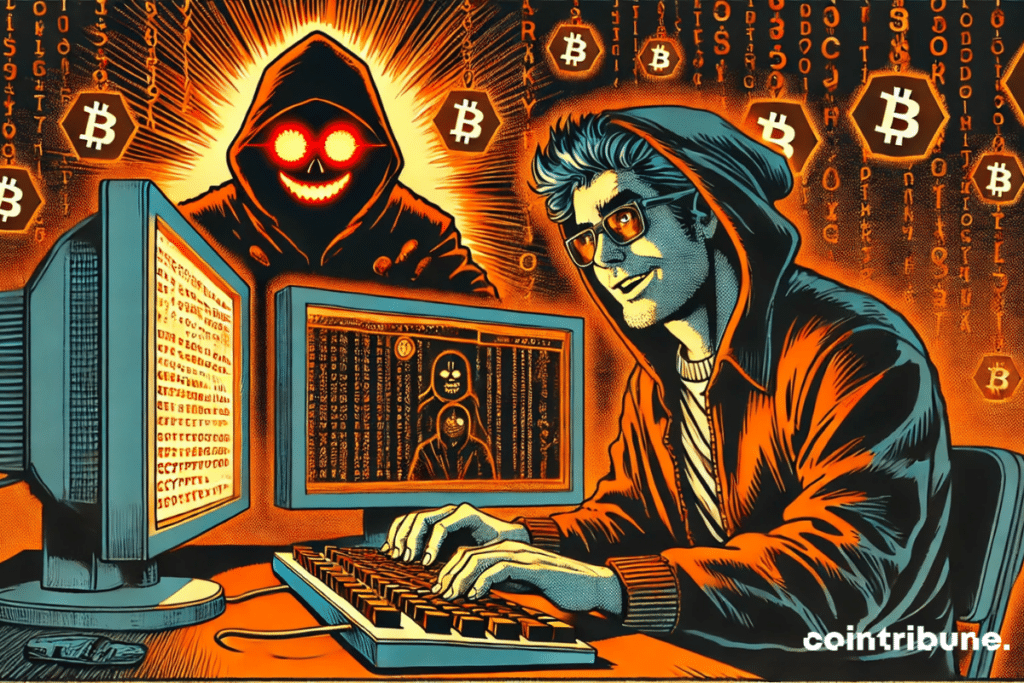The $12 Billion Threat : How Scammers Exploit AI In Crypto ?
The crypto industry, once synonymous with financial innovation, has become a prime playground for increasingly sophisticated scams. As 2024 has already been marked by an explosion of digital fraud, Chainalysis sounds the alarm: 2025 could very well be the most lucrative year in history for cybercriminals. Artificial intelligence (AI), once seen as an asset for enhancing security, is now a formidable weapon in the hands of fraudsters. Identity falsification, voice impersonation, automation of psychological manipulation… the new strategies of scammers push the limits of possibility.

AI, the engine of an explosion of scams in 2025
According to Chainalysis, crypto-related scams generated approximately $9.9 billion in 2024. But this already colossal figure could surpass $12 billion during the year 2025. The main reason is the rapid rise of generative artificial intelligence, which facilitates the creation of increasingly realistic and hard-to-detect scams.
Elad Fouks, head of fraud products at Chainalysis, explains that “generative AI now allows for the creation of entirely fictitious identities, rendering KYC checks obsolete and multiplying large-scale attacks.” This enables scammers to impersonate influential personalities, perfectly mimic human voices, or produce texts of unsettling credibility. These technological advances provide them with an unprecedented means to circumvent security measures and trap even the most cautious investors.
While false promises of returns and “pig butchering” scams remain the most commonly used methods, a mutation is occurring. Now, scammers are no longer content with mass scams but are developing ultra-targeted frauds, manipulating their victims psychologically with surgical precision.
An organized crime industry in full expansion
Beyond technological advances, it is the industrialization of fraud that worries experts the most. Contrary to popular belief, these scams are no longer the work of isolated individuals but of genuine criminal organizations, structured like businesses.
Platforms like Huione Guarantee, for example, offer simplified access to legitimate services, but also to a complete infrastructure for orchestrating fraud. These underground marketplaces allow cybercriminals to purchase ready-to-use scam kits, hire specialized developers or even outsource certain operations to fraudulent “call centers”.
This model, based on delegation and professionalization, significantly increases the effectiveness of scams. Thus, victims fall into traps that are increasingly credible, with deceptive marketing materials, fake trading interfaces, and fraudulent customer service designed to prolong the illusion as long as possible.
The stakes are high: if no effective preventive measures are put in place, the repercussions on investor trust could be devastating. In the face of this growing threat, regulators and trading platforms find themselves under pressure. Some are already considering a drastic strengthening of verification protocols and stricter regulation of AI tools applied to financial transactions. The question remains: will the crypto sector be able to adapt to this new wave of scams, or will it sink into an irreversible crisis of confidence?
Maximize your Cointribune experience with our "Read to Earn" program! For every article you read, earn points and access exclusive rewards. Sign up now and start earning benefits.
Diplômé de Sciences Po Toulouse et titulaire d'une certification consultant blockchain délivrée par Alyra, j'ai rejoint l'aventure Cointribune en 2019. Convaincu du potentiel de la blockchain pour transformer de nombreux secteurs de l'économie, j'ai pris l'engagement de sensibiliser et d'informer le grand public sur cet écosystème en constante évolution. Mon objectif est de permettre à chacun de mieux comprendre la blockchain et de saisir les opportunités qu'elle offre. Je m'efforce chaque jour de fournir une analyse objective de l'actualité, de décrypter les tendances du marché, de relayer les dernières innovations technologiques et de mettre en perspective les enjeux économiques et sociétaux de cette révolution en marche.
The views, thoughts, and opinions expressed in this article belong solely to the author, and should not be taken as investment advice. Do your own research before taking any investment decisions.